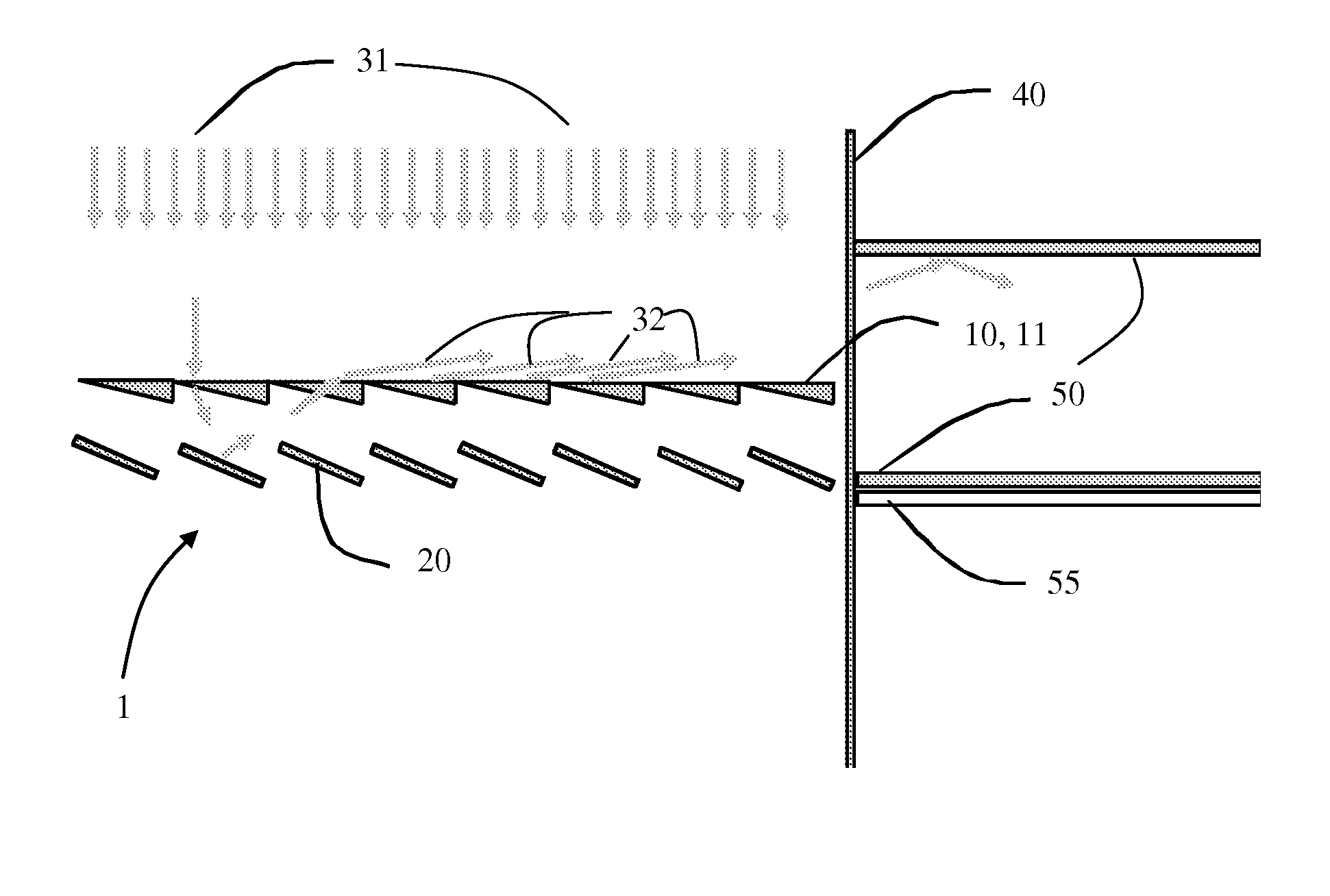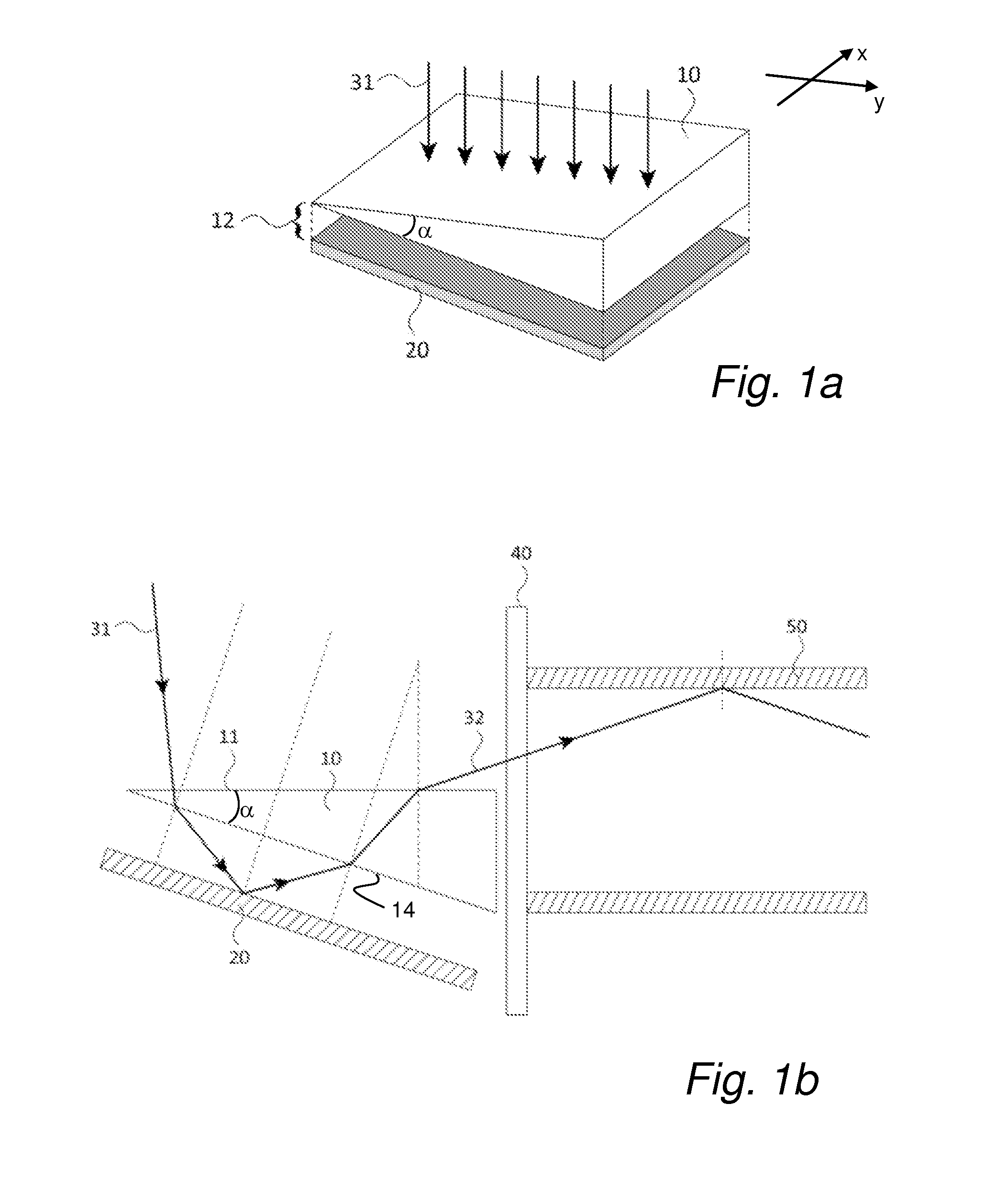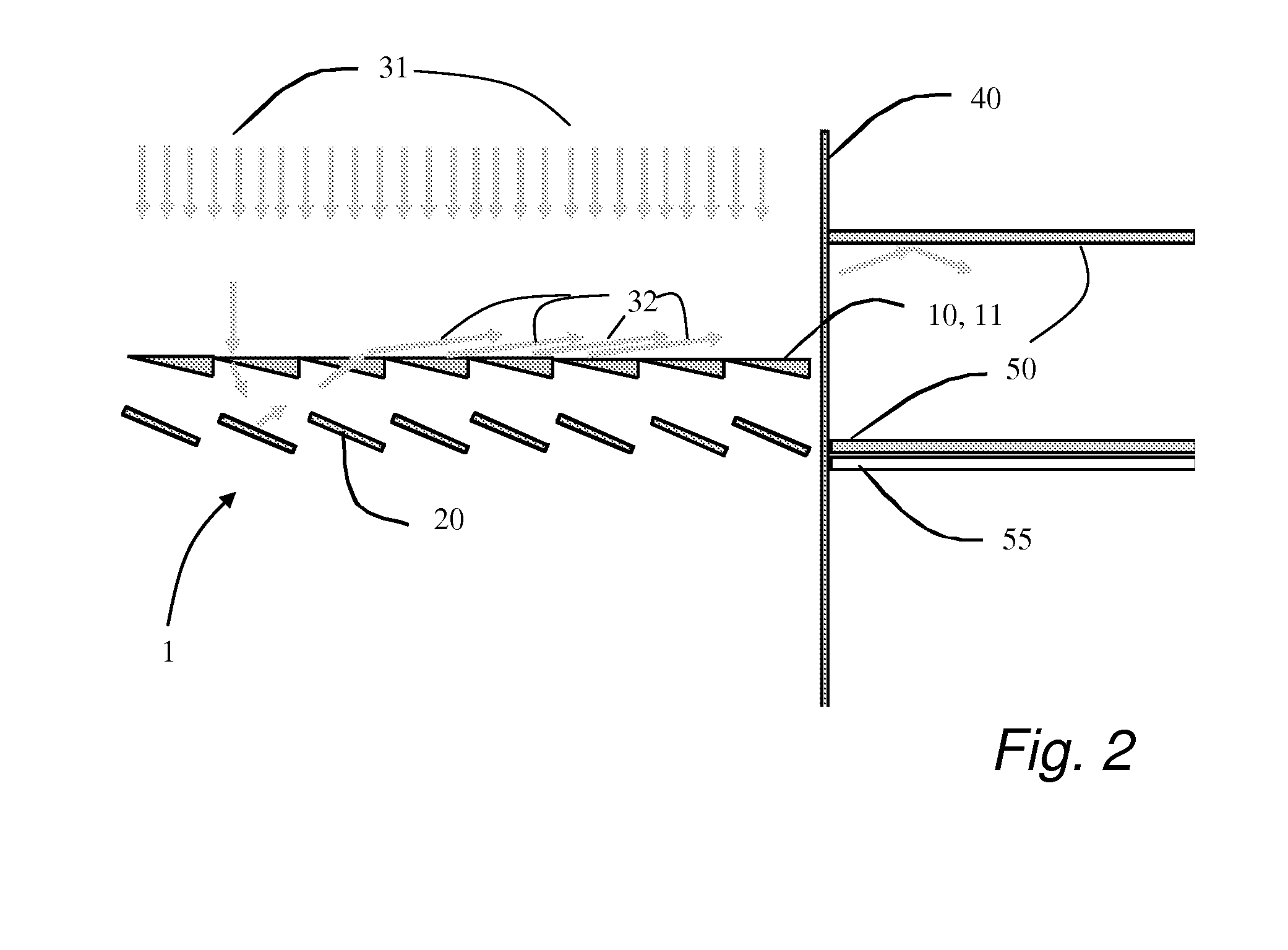Light redirection device
a technology of redirecting devices and light sources, which is applied in the direction of lighting and heating apparatus, instruments, and using daylight, etc., can solve the problems of glare, insufficient amount of light that is transmitted into the room, and often too small light amount to be sufficient,
- Summary
- Abstract
- Description
- Claims
- Application Information
AI Technical Summary
Benefits of technology
Problems solved by technology
Method used
Image
Examples
Embodiment Construction
[0034]In the various Figs. of the drawing identical parts are always given the same reference number so that they are generally only described once in the detailed description below.
[0035]FIG. 1a and FIG. 1b shows the principle of the device according to the invention having one transparent element 10 and one light reflector 20. The light reflector 20 is arranged at a side of the triangular prism or transparent element 10 opposite from a light receiving side 11. The triangular prism has an angle α between its top (11) and bottom (14) surfaces. The reflective element 20 is parallel to the bottom surface of the prism.
[0036]The light reflector 20 may be in optical contact with the triangular prism 10, but is preferably spaced a certain distance 12 away from the triangular prism 10 to achieve an additional refraction. When collimated light 31 is incident on the light receiving side 11 of the triangular prism 10, it is first refracted towards the light reflector 20, reflected back into t...
PUM
 Login to View More
Login to View More Abstract
Description
Claims
Application Information
 Login to View More
Login to View More - R&D
- Intellectual Property
- Life Sciences
- Materials
- Tech Scout
- Unparalleled Data Quality
- Higher Quality Content
- 60% Fewer Hallucinations
Browse by: Latest US Patents, China's latest patents, Technical Efficacy Thesaurus, Application Domain, Technology Topic, Popular Technical Reports.
© 2025 PatSnap. All rights reserved.Legal|Privacy policy|Modern Slavery Act Transparency Statement|Sitemap|About US| Contact US: help@patsnap.com



